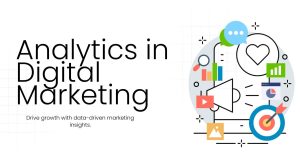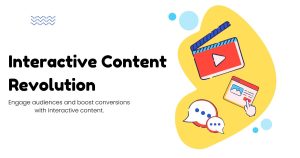Psychology Behind Emotional Marketing

Emotional marketing isn’t just a clever ad strategy. It’s rooted in human psychology. It taps into our feelings, often without us even realizing it. Why do some ads make us cry, laugh, or feel nostalgic? The answer lies in the way our brains process emotions and how brands use this to influence decision-making.
What Is Emotional Marketing?
Emotional Marketing This is when campaigns are based on emotions. It could be joy, or it could be sadness, or it could be anger, or even fear. When we experience something, we remember it better. That’s why brands seek to tap into your emotions rather than simply push a product’s features.
Recall the last commercial that brought a tear to your eye or gave you goose bumps. You can’t necessarily recall all the specifics, but you can probably recall the feeling. That’s the power of emotional marketing.
While emotional marketing builds strong connections, it’s also important to understand the risks of branding that can affect long-term trust.
The Brain’s Role in Emotional Marketing
“If you want to get at this stuff you have to understand the human brain,” he said. The brain does not treat all input alike. Prioritize Emotional Content We cling to happy experiences and want to block out negative ones. The system of the brain that processes emotions and memories — the limbic system — can react more quickly than the part of the brain that handles logical thinking.
What this boils down to is that we tend to make most decisions emotionally, then rationalize them. This is something that marketers understand and manipulate accordingly. When you can make someone feel something, there’s a greater likelihood that you will also inspire them to act.
Why Emotions Matter More Than Logic in Marketing
We all want to feel like we are rational consumers. But research again and again demonstrates that feeling motivates most purchase decisions. And that applies to any industry. From buying a car to deciding on a charity to donate to, emotion is behind the wheel.
Emotion is a factor in rational, logic-based B2B marketing, for all P&G talk about connecting with consumers with brands that touch their lives – but in order to allow that emotional response to happen, rational and logic must come first. And decision-makers are human after all. If your message makes them feel trust, anticipation, or readiness, they’re more likely to consider your solution.
Emotional Triggers Marketers Use
Marketers often rely on specific emotional triggers. While there are many, some of the most powerful include:
Happiness
Ads filled with smiling faces, bright colors, and upbeat music boost mood. A good mood can lead to brand association with positive feelings. This works well for travel, food, and entertainment brands.
Sadness
Sad stories, especially involving people or animals, can be deeply moving. These campaigns often aim to drive awareness or donations. The emotional pull can lead to empathy, and then action.
Fear
Fear-based messages are used to push urgency. It’s effective in industries like insurance, health, or cybersecurity. If people feel they might lose something, they’re more likely to take action.
Nostalgia
Nostalgic marketing appeals to the past. It can be extremely effective because it connects with personal memories. When people see something familiar from their childhood or youth, they feel safe and connected.
Belonging
Humans are social creatures. We want to feel part of something. Brands that build communities or social movements tap into this powerful need. People become loyal not just because of the product, but because of the identity the brand gives them.
Case Studies That Prove the Psychology Works
Let’s look at a few examples that show emotional marketing in action.
Coca-Cola’s “Share a Coke” Campaign:
By putting people’s names on bottles, Coca-Cola made something personal. People felt seen. It wasn’t about the drink anymore. It was about connection, sharing, and joy.
Always’ “Like a Girl” Ad:
This campaign tapped into empowerment and broke stereotypes. It moved viewers by challenging gender norms. Emotional, inspiring, and socially impactful, it left a lasting impression.
Apple’s Product Launches:
Apple doesn’t just sell tech. They sell dreams, creativity, and innovation. Their product videos are packed with emotional cues—music, visuals, and storytelling—that create excitement and anticipation.
Why Emotional Marketing Builds Loyalty
When a brand connects emotionally, it’s not just selling. It’s building a relationship. That connection forms trust. And trust leads to loyalty.
Loyal customers are more valuable than new ones. They buy more, promote your brand, and stick with you even when competitors offer better deals. Emotional bonds create that kind of loyalty.
A brand that makes someone feel supported or inspired isn’t easily forgotten. And that’s exactly what emotional marketing aims to do—stay in the heart, not just the head.
Ethics of Emotional Marketing
With great power comes great responsibility. Emotional marketing can be manipulative if done unethically. Creating false fear or exploiting real-world tragedies just to sell a product can backfire.
The goal should be connection, not manipulation. It’s important to remain authentic. Emotional marketing works best when it tells real stories and respects the audience’s intelligence and emotions.
How to Integrate Emotional Marketing into Your Strategy
If you want to use emotional marketing effectively, start with your audience. Understand what they care about, what makes them happy, and what keeps them up at night.
Then, craft your message with feeling. Use visuals, music, stories, and language that reflect genuine emotion. It’s not about exaggerating—it’s about showing you care.
Test and Learn
Different emotions work for different audiences. What resonates with one group might not move another. A/B testing can help you refine emotional tones and choose the most effective direction.
Be Consistent
Emotional messaging should align with your brand values. If your brand is about joy and freedom, don’t switch suddenly to fear-based tactics. Stay true to your voice.
Use Real Stories
User-generated content, testimonials, or behind-the-scenes looks into your company can humanize your brand. These stories bring authenticity and allow people to relate to your message.
Emotional Connection in Action
The psychology behind emotional marketing is both fascinating and powerful. It shows how deeply our feelings influence our choices. Brands that understand this can form stronger, longer-lasting relationships with their customers.
But it’s not about pushing buttons. It’s about listening, connecting, and caring. In a crowded market, emotion is what makes your brand human—and being human is what people remember.





